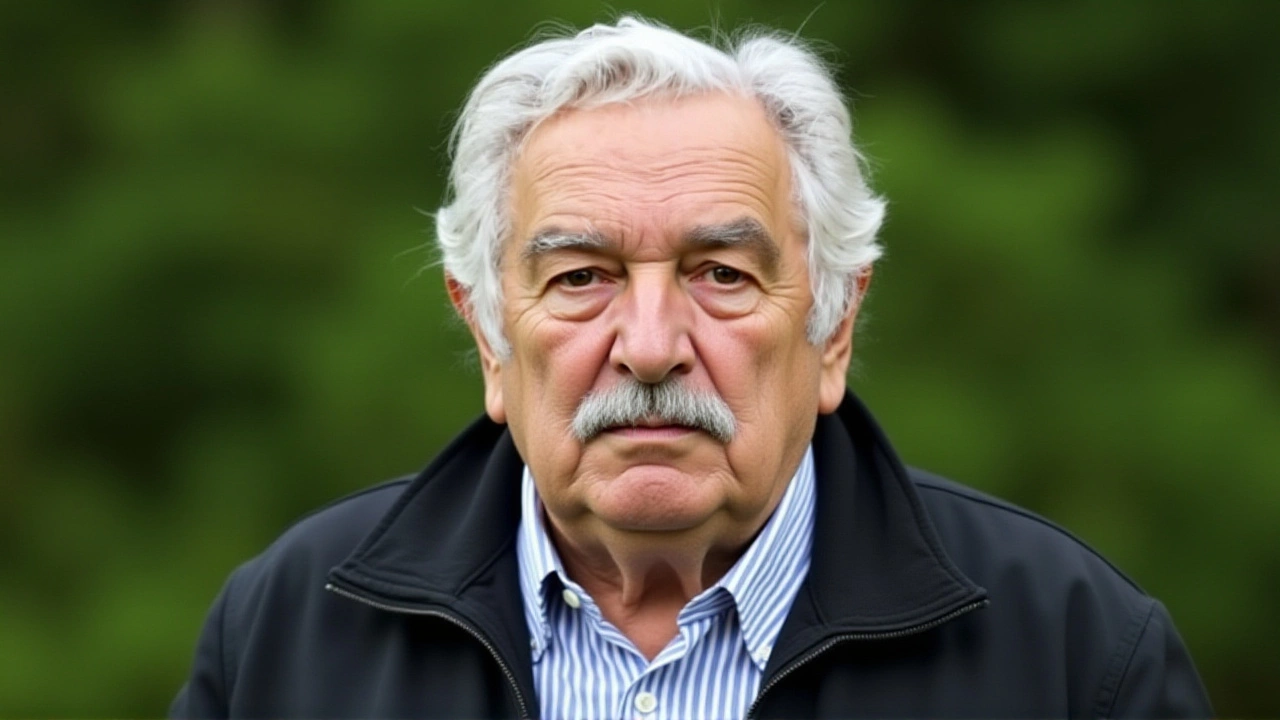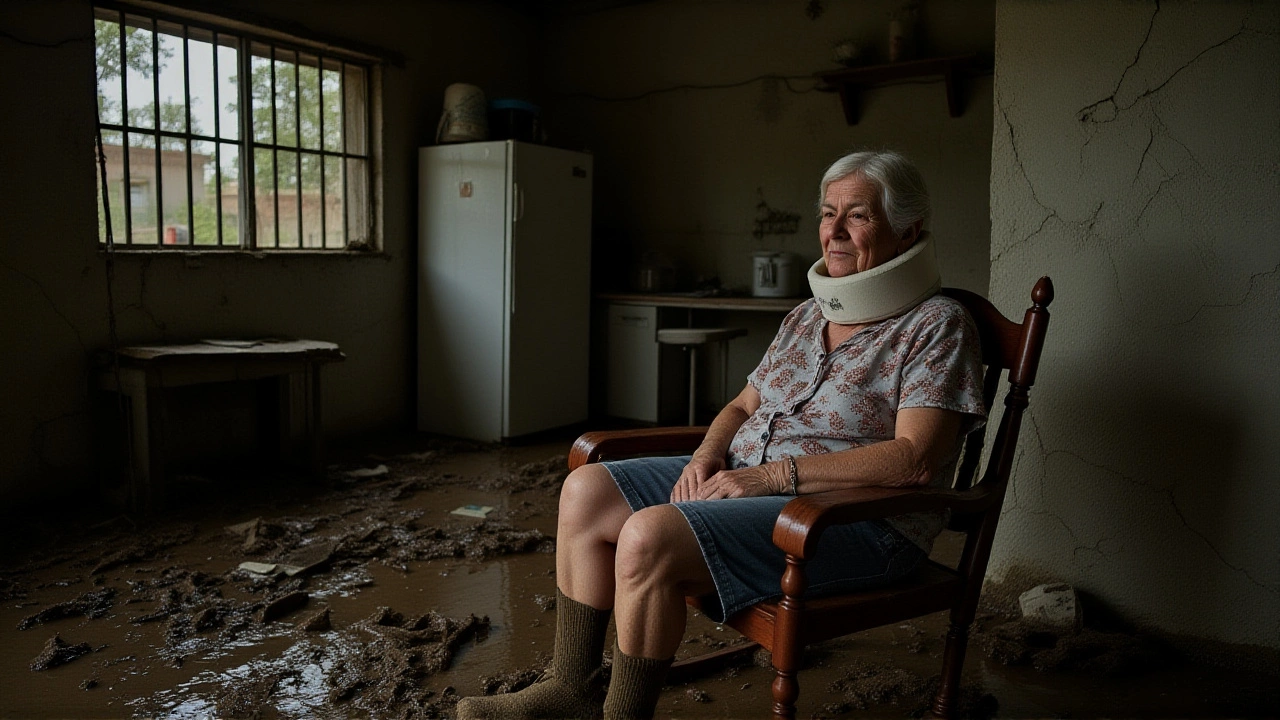Seventy-six people are dead. Thirty-one are missing. And more than 70,000 homes lie ruined — all because of rain that refused to stop. From October 7 to 11, 2025, eastern Mexico was drowned by a deluge so violent it carved canyons into hillsides, swept away bridges, and turned towns into islands. The United Nations Office for the Coordination of Humanitarian Affairs (UN OCHA) confirmed the toll on October 21, 2025, but for families in Poza Rica, Hidalgo, and the riverbanks of Veracruz, the numbers were never just statistics — they were neighbors, grandparents, children still trapped on rooftops.
When the Rivers Rose and the Hills Gave Way
The disaster began with two tropical storms colliding over the Pacific, their moisture drawn inland by an unusually saturated atmosphere. Rainfall totals hit 24 inches in just four days across Veracruz — the equivalent of an entire season’s worth falling in under a week. Rivers burst their banks. Mudslides buried entire neighborhoods. In Álamo, Veracruz, floodwaters rose to six and a half feet, swallowing every medical device in the local clinic. Martí Batres, the local health director, now runs triage under tarps, using flashlights to stitch wounds. "We have no power, no refrigeration, no sterile instruments," he said. "But we have people who need us. That’s enough."
The hardest-hit states — Veracruz, Hidalgo, and Puebla — saw over 300 communities cut off. Eleven-two remained inaccessible as of October 21, with 74 of them in Hidalgo alone. Some villages, home to just 200 people, vanished from communication grids. No one knows how many died there. Not yet.
Who Was Left Behind — And Why
President Claudia Sheinbaum promised "no expense spared," and the federal response moved fast: thousands of soldiers cleared landslides, helicopters dropped food to mountaintop hamlets, and private contractors helped rebuild key highways. But for many, it was too little, too late.
Neptalí Rodríguez, a farmer from Poza Rica, walked six hours through debris to reach the nearest aid station. "We think it’s about six or seven hours walking," he said, wiping mud from his boots. "But we want people to know that we’re working… that they can see we also care about their situation."
Others weren’t so lucky. Ramírez, a mother evacuated with her elderly grandmother, watched from a relief truck as her sister and three children clung to a hillside above a swollen river. "They’re in constant danger," she whispered. "The ground’s still moving. They haven’t come for them yet."
Experts say the delay wasn’t just logistical — it was systemic. According to researchers cited in The Alpena News, warnings were issued, but they didn’t reach the most vulnerable. Indigenous communities, already marginalized and living on eroded slopes, received alerts too late — if at all. The the World Climate Summit in 2023 warned that Mexico’s rainy season would intensify, but local governments lacked funding for early-warning systems in remote areas. "When authorities’ actions are good, nothing happens," said analyst Valdés. "But when they’re slow? People die."

The Humanitarian Lifeline
While the Mexican government scrambled, international aid poured in. UNICEF, Save the Children, and Médecins du Monde Suisse set up mobile clinics in tents, treating dehydration, respiratory infections, and injuries from falling debris. Clean water was rationed. Diarrhea cases spiked. Children under five accounted for nearly 40% of those hospitalized in Veracruz.
Meanwhile, the Copernicus Emergency Management Service (EMS) deployed its EMSR845 rapid-mapping system, producing nine satellite-derived damage assessments. Those maps helped direct aid convoys to the most critical zones — but only after days of delay. "We saw the flood zones before the government did," said one EU coordinator. "The tech was ready. The response wasn’t."
Climate Change Isn’t Coming — It’s Here
What made this disaster different wasn’t just the rain. It was the pattern. For decades, Mexico’s rainy season peaked in August. Now, it lingers into November. The soil doesn’t recover. Hillsides become sludge. Rivers don’t recede — they just keep rising.
Domínguez, a meteorologist in Puebla, recalled the forecast from October 5: "It was clear. We warned of 18 to 24 inches. But people didn’t leave because they’d been told to expect this before — and nothing happened." Now, he says, that mindset is lethal. "We’re not dealing with weather anymore. We’re dealing with climate. And we’re not prepared."
Studies show that extreme rainfall events in eastern Mexico have increased by 68% since 2000. The World Meteorological Organization links this directly to warming ocean temperatures — a trend that’s accelerating. The UN OCHA report warned that without infrastructure investment and community-based early-warning systems, future events could be worse.

What Comes Next
More rain is forecast for southern Mexico over the next 48 hours. The government has extended emergency declarations through November 15. But the real test won’t be the next storm — it’ll be the rebuilding. Over 70,000 homes are damaged. Thousands of families have nowhere to go. And many of the poorest, especially Indigenous communities in Veracruz and Hidalgo, have no insurance, no savings, and no political voice.
On November 12, 2025, PreventionWeb released data showing that 82% of the deaths occurred in communities with high levels of poverty and low access to public services. "This wasn’t a natural disaster," said Dr. Elena Ruiz, a social geographer at UNAM. "It was a failure of equity."
For now, soldiers still patrol the muddy roads. Volunteers hand out bottled water. Children play with donated toys under tents. But behind every smile, there’s a question: When will we be ready for the next one?
Frequently Asked Questions
How many people were affected in Veracruz, and why is it the hardest-hit state?
Over 300,000 people were affected in Veracruz alone, according to Governor Rocío Nahle. The state’s geography — steep mountains, fast-flowing rivers, and dense settlements along floodplains — made it especially vulnerable. Rainfall reached 24 inches in four days, overwhelming drainage systems. Many homes were built on flood-prone land without proper elevation or reinforcement, and Indigenous communities often live in remote, underserved areas with limited emergency access.
Why did some communities receive help late, even when warnings were issued?
Warnings were issued, but communication breakdowns left many rural and Indigenous areas without alerts. In Poza Rica, residents reported hearing sirens only after floodwaters were already waist-high. Language barriers, lack of cell service, and underfunded local emergency offices meant official messages didn’t reach the most vulnerable. Experts say this isn’t unique — it’s systemic in Mexico’s disaster response infrastructure.
What role did climate change play in this disaster?
Climate change has intensified rainfall patterns across eastern Mexico, increasing the frequency and severity of extreme events by nearly 70% since 2000. Warmer ocean temperatures fuel stronger tropical storms, and saturated soils can’t absorb heavy rain — leading to more landslides and flash floods. Scientists warn that what was once considered a "100-year flood" may now occur every 10 to 15 years, demanding entirely new planning standards.
How are Indigenous communities being impacted differently?
According to PreventionWeb data from November 12, 2025, 82% of fatalities occurred in communities with high poverty and low public service access — many of which are Indigenous. These groups often live on unstable slopes, lack legal land titles (making them ineligible for aid), and face language barriers in emergency broadcasts. Aid organizations report that traditional knowledge of land and weather isn’t being integrated into official response plans, leaving them even more exposed.
What’s being done to prevent future disasters like this?
The Mexican government has pledged to upgrade early-warning systems and rebuild infrastructure with flood-resilient designs. UNICEF and the EU are funding community-based monitoring networks in 15 high-risk municipalities. But experts caution that without land-use reforms — especially banning construction in floodplains — rebuilding alone won’t be enough. Long-term solutions require political will, funding, and inclusion of local voices in planning.
How long will recovery take, and what’s the biggest obstacle?
Recovery could take five to seven years, based on similar disasters in Guatemala and Honduras. The biggest obstacle isn’t money — it’s coordination. Dozens of agencies, NGOs, and private firms are involved, but without a unified database of needs, aid is duplicated in some areas and absent in others. Many families are still living in tents, and children haven’t returned to school. Without centralized tracking, the risk of long-term neglect is high.
